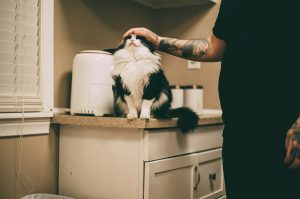
15 Smart Pet Budgeting Tips Every Apartment Owner Should Know
Raising a pet in an apartment comes with unique expenses—and sometimes, fewer cost-cutting options. From monthly supplies to emergency vet bills, the costs can sneak up fast. But with a few clever pet budgeting tips, you can dramatically reduce your pet care costs without sacrificing your furry friend’s happiness or health.
This post is your go-to guide for managing pet costs in a small-space setting. Whether you're a first-time dog owner in a high-rise or a seasoned cat parent on a budget, these 15 tips are designed to stretch your dollars without cutting corners. Let’s dive into smart, real-world strategies that actually work.
1. Budget for Preventive Vet Care—Not Just Emergencies
It’s easy to ignore regular vet visits until something goes wrong—but preventive care saves money in the long run. Routine checkups, dental cleanings, and vaccinations catch issues early before they become costly emergencies. In fact, many pet insurance providers reimburse more generously for preventive care when it’s documented.
Skip the guilt of surprise vet bills by building routine vet visits into your pet budget. Aim for one wellness check per year minimum—more for senior pets or those with health issues. You can find a full preventive care breakdown for dogs here and for cats here.
2. Track Pet Expenses with a Simple Spreadsheet
You can’t improve what you don’t measure. Start logging your pet’s expenses—food, vet visits, grooming, gear, meds, even toys—in a basic spreadsheet or budgeting app. Over time, you’ll identify patterns and spot where you’re overspending.
For apartment dwellers, tracking delivery fees and impulse purchases (like a second litter box or “emergency” pet pads) can be especially helpful. Once it’s on paper, it’s easier to make cuts—or redirect spending toward what your pet actually uses and needs.
3. Compare Pet Insurance Plans Before You Commit
Pet insurance can be a lifesaver—or a money sink. It all depends on the plan. Before signing up, compare what’s covered, what’s excluded, and how reimbursement works. Some plans cover routine care, others only emergencies.
Use a pet insurance comparison site like Pawlicy Advisor to find a plan that fits your pet’s age, breed, and your financial cushion. Even a mid-tier plan can soften the blow of accidents or chronic conditions, which are harder to cover out of pocket.
4. DIY Enrichment Toys Instead of Buying New
You don’t have to drop $30 on every “brain game” toy you see online. Some of the best enrichment toys are free or cost less than a coffee. Stuff an old sock with a crinkly water bottle. Turn an empty toilet paper roll into a cat puzzle by folding the ends shut with treats inside.
If you’re crafty, try one of these DIY enrichment toy ideas to keep your dog or cat engaged. The goal is mental stimulation, not perfection—your pet won’t care if it came from a boutique or your kitchen drawer.
5. Make Use of Local Pet Assistance Resources
If you're facing a tight month or an unexpected bill, don’t hesitate to look into local support programs. Many areas have community pet food banks, low-cost spay/neuter clinics, and even subsidized veterinary care for qualifying households.
Use platforms like Pet Help Finder to locate assistance near you. These services are often underused and can make the difference between affording care now or delaying it until it becomes a crisis.
6. Choose Multi-Purpose Gear That Grows with Your Pet
Instead of buying separate products for every phase of your pet’s life, look for adjustable or multi-purpose items. A crate with a divider panel can grow with a puppy. A raised feeder can support both dogs and cats. Modular cat trees can be expanded later instead of replaced.
Not only does this cut down on clutter in a small apartment, but it also saves you from rebuying gear every few months. Read reviews carefully and prioritize build quality—it’s better to spend $40 once than $15 three times on flimsy gear.
7. Groom at Home Between Professional Visits
Professional grooming is worth the investment—but if you want to stretch the time between appointments, a little at-home maintenance goes a long way. Brushing your pet weekly helps reduce mats, tangles, and shedding. Wipe their paws and clean ears regularly, especially in muddy or humid weather.
Invest in a basic grooming kit with clippers, a slicker brush, and nail trimmers. You don’t have to do full grooms, just spot cleaning and upkeep. If your pet has sensitive skin or long fur, consult your groomer about which tools are best.
8. Skip the Trendy Treats and Make Your Own
Trendy pet treats with exotic ingredients can run $10 or more per bag. Most pets don’t care about “superfoods”—they care about taste. You can make simple, pet-safe treats at home using pantry staples like oats, bananas, canned pumpkin, and peanut butter (xylitol-free, of course).
Try these easy homemade dog treat recipes for inspiration. For cats, bake tiny tuna bites using flour and eggs. Homemade treats also let you avoid additives and customize for pets with allergies.
9. Don’t Skip Dental Care—It Pays Off Long-Term
Oral health is one of the most overlooked areas of pet care—and it’s also one of the most expensive to fix once there’s a problem. Annual dental cleanings can cost hundreds, and untreated infections may require extractions or antibiotics.
Get ahead of it by brushing your pet’s teeth regularly or using VOHC-approved dental treats and rinses. Visit vohc.org to see which products are proven to reduce plaque and tartar. A little effort each week can save you thousands over your pet’s lifetime.
10. Use a Pet Emergency Fund (Even a Small One)
Unexpected vet bills can wreck your budget—especially in an apartment setting where many pet issues (like toxic plants or neighbor altercations) can escalate fast. Setting aside even $10–$25 a month in a pet-only savings account can help soften the blow.
If you have a high-deductible pet insurance plan or none at all, this buffer could be the difference between treating a problem quickly or letting it worsen. Apps like YNAB or Goodbudget make it easy to earmark pet funds without complicating your main budget.
11. Borrow or Swap Pet Gear Locally
Why buy a new crate, cat carrier, or even Halloween costume when you could borrow one from a friend or neighbor? Many pet parents have lightly used items sitting in closets. Swapping or borrowing saves money, storage space, and waste.
Join local pet owner groups on Facebook or Nextdoor and post your request. You'll be surprised how often people are happy to help—or even give items away. Just sanitize anything before use and return borrowed gear in great condition.
12. Avoid Buying Food from Convenience Stores
It might be tempting to grab pet food at the corner store when you’re in a pinch—but you’ll pay a steep markup. These shops often carry smaller bags at inflated prices, and you may end up buying a lower-quality brand out of urgency.
Instead, set calendar reminders for when you’re running low and reorder early. Subscription discounts from Chewy, Amazon, or your favorite local pet store can help you stay ahead while saving 5–15% off per order.
13. Look for Hidden Pet Perks in Your Insurance or Rent
Some renters’ insurance policies cover pet liability or even basic pet medical expenses. It’s worth checking your policy to see what’s included—you might already have protection you didn’t realize.
Also, ask your landlord about included pet perks. Some pet-friendly apartments offer free waste bags, dog wash stations, or discounts at local pet businesses. If you’re paying a pet fee, get your money’s worth!
14. Schedule Annual Price Reviews for Subscriptions
If you subscribe to food, litter, meds, or treats, set a calendar reminder every 6–12 months to compare prices. Brands often raise rates quietly, and you may find a better deal elsewhere—or qualify for a new customer promo by switching suppliers.
Price creep can eat away at your pet budget without you noticing. By revisiting your subscriptions regularly, you can make sure your “set it and forget it” setup is still working in your favor.
15. Prioritize Quality Where It Counts
Not everything needs to be premium—but a few well-chosen investments can save you money down the line. Focus your dollars on high-quality food, a comfortable bed or crate, and any gear that affects daily life (like a litter box or leash).
Cutting corners in these areas usually leads to replacements, messes, or vet bills. A good rule of thumb: budget to buy the best version of the thing your pet uses every day—and simplify or DIY the rest.
Final Thoughts
Being a savvy pet parent isn’t about penny-pinching—it’s about spending with intention. These pet budgeting tips can help you reduce stress, avoid unnecessary costs, and still give your dog or cat the love, care, and enrichment they deserve. Whether you live in a tiny apartment or just want to save smarter, these ideas are proof that you can care deeply and spend wisely—all without compromising on quality or compassion.
Frequently Asked Questions
How can I save money on pet food without compromising quality?
Buy in bulk when possible, subscribe for auto-ship discounts, and look for high-quality store brands or smaller manufacturers with strong reviews. Always check the ingredient list and look for AAFCO standards if you’re in the U.S. or Canada.
Is pet insurance worth it for apartment pets?
Yes, especially if you can’t afford a large emergency bill out of pocket. Even basic accident coverage can be a lifesaver. Compare plans carefully to make sure the benefits align with your pet’s breed, age, and risk level.
What’s the cheapest way to keep indoor pets entertained?
DIY toys, treat puzzles made from recyclables, and interactive play sessions cost next to nothing but provide excellent mental stimulation. Window perches and cat TV (YouTube bird videos) are free options for indoor enrichment too.
Are community resources really helpful for pet owners on a budget?
Absolutely. Many cities offer pet food banks, low-cost vet care, and donation-based grooming or vaccinations. These programs are underutilized and can make a big difference during financial rough patches.
How much should I budget monthly for a dog or cat?
It depends on your pet’s needs, but a reasonable budget is $50–$150/month. This includes food, supplies, and a buffer for medical care or emergencies. Track your actual spending for a few months to set a personalized baseline.

Join the Busy Pet Parent Newsletter!
Get easy routines, time-saving tips, and the latest gear reviews—delivered straight to your inbox.
Perfect for busy pet owners, apartment dwellers, and anyone who wants a happy, healthy companion (without the stress).
Exclusive guides & checklists
Product recommendations & deals
No spam—unsubscribe anytime!




